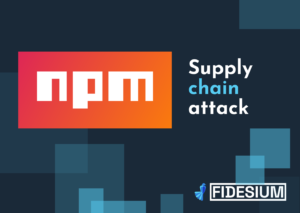The B-52 Stratofortress, a legendary long-range strategic bomber, had a rocky early history with several crashes and incidents. Introduced by Boeing in the 1950s, the B-52 was a complex aircraft for its time, pushing the boundaries of jet-powered heavy bombers. Before the widespread adoption of standardized pre-flight checklists – now a cornerstone of aviation safety – its operational teething pains were evident.
- The 1956 crash in California due to a stall during a test flight
- The 1961 Goldsboro incident, where a B-52 broke apart mid-air, nearly dropping nuclear bombs.
These mishaps often stemmed from human error, mechanical failure, or a mix of both – things a pre-flight checklist could mitigate by ensuring critical systems were systematically verified.
The aviation industry as a whole learned hard lessons from such incidents, not just with the B-52. The concept of checklists gained traction after earlier events like the 1935 Boeing Model 299 crash, but their rigorous implementation evolved over time, including during the B-52’s service life.
By forcing crews to methodically check hydraulics, fuel systems, engines, and more, checklists turned chaotic pre-flight routines into disciplined processes, drastically reducing preventable accidents.
As a result, the B-52’s crash rate dropped as procedures tightened and training improved.
I told you that story to tell you this one.
Web3 development is incredibly difficult with a lot of moving parts. Decentralization, one of the fundamental keys to blockchain’s success also leads to new challenges, and outdated security standards of past days cannot serve the new technology.
The Web3 Security Crisis
Much like early aviation, the blockchain industry is experiencing its own turbulent phase. With over $3.8 billion lost to hacks in 2023 alone, Web3 projects are crashing at an alarming rate. The causes mirror those early aviation incidents: human error, technical oversights, and an absence of standardized safety protocols.
Traditional security approaches in Web3 follow an event-based model: build your protocol, hire an auditor for a one-time review, deploy, and hope nothing breaks. This approach is the equivalent of checking an aircraft only on its maiden voyage, then never again – despite continuous modifications, upgrades, and changing conditions.
The Fatal Flaw in One-Time Smart Contract Audits
Traditional smart contract audits have a major weakness: they’re static. They give you a snapshot of your code’s security at a single moment in time – and then they expire. But Web3 isn’t static. It’s fast-moving, constantly evolving, and highly interconnected. Here’s what changes all the time:
- New features and upgrades are deployed regularly
- Dependencies shift as external protocols evolve
- Fresh attack vectors emerge almost weekly
- Market dynamics create unforeseen risks
Every time your code changes, your last audit becomes outdated. And unless you run another audit (which few projects do consistently), you’re flying blind.
Why Web3 Needs a Systematic Approach to Security
Think of how aviation became one of the safest industries on earth – not through one-time inspections, but through systematic pre-flight checklists and ongoing maintenance. Web3 needs that same shift. Security can’t be a one-time event. It has to be an integrated, continuous process.
Here’s what that looks like in practice:
1. Pre-Deployment Security Checks
Before any smart contract goes live, it needs a full security sweep.
This includes:
- Static analysis to catch known vulnerabilities
- Fuzz testing to detect edge-case exploits
- Invariant testing to validate logic consistency
- Gas optimization audits to prevent economic manipulation
You wouldn’t launch a plane without checking the engine. Why launch a contract without verifying its security?
2. Continuous Maintenance and Re-Auditing
Even after a contract is deployed, the work isn’t over. Just like aircraft need regular maintenance, smart contracts need ongoing security reviews:
- Re-audits after each major code change
- Checks against newly discovered vulnerabilities
- Real-time monitoring for suspicious behavior
- Economic stress tests to ensure protocol stability
The Cost of Inaction Is Greater Than the Cost of Prevention
Some teams hesitate to adopt continuous security because they think it’s too expensive or slows them down. But consider this:
- The average Web3 exploit costs millions of dollars
- Reputation damage is often irreversible
- Security failures lose investor and user trust
With today’s automated security tools, you can achieve rigorous protection at a fraction of the cost and effort of traditional audits. It’s not about spending more – it’s about being smarter.
Building a Culture of Security in Web3
Beyond tools, Web3 needs a mindset shift. Security shouldn’t be a checkbox. It should be part of how you build.
- Design with security in mind from day one
- Train developers to spot security flaws early
- Track security metrics like you track performance
- Make secure code reviews a non-negotiable
The projects that win long-term will be the ones users trust.
From Isolated Audits to Embedded Protection
Traditional audits are like taking your aircraft to the mechanic once a year. But what about the other 364 days? Web3 needs integrated security that works in real time:
- Built directly into your CI/CD and GitHub workflows
- Triggered automatically with every pull request or code push
- Monitored continuously with automatic alerts
- Stored immutably on-chain to prove your trustworthiness
This reduces developer fatigue while radically improving protection.
Fidesium: Making Continuous Security Effortless
At Fidesium, we believe security should move at the speed of Web3. That’s why we’ve built a platform that:
- Verifies your code before every deploy via GitHub integration
- Runs automated recurring audits with every update
- Mints audit results on-chain to prove your security posture
- Assesses real-time risk across protocols and dependencies
Just like checklists transformed aviation safety, continuous smart contract security can transform blockchain – not by slowing it down, but by making it more trustworthy.
Your Smart Contract Security Checklist Starts Now
The legendary B-52 aircraft has lasted over 70 years thanks to rigorous maintenance and systemized safety. Imagine if your smart contracts had the same reliability and resilience. If you want your project to thrive in Web3, you need more than innovation – you need trust. And trust starts with consistent, visible, provable security.
Ready to make the shift? Explore how Fidesium can secure your project with automated, continuous audits – visit www.fidesium.xyz today. Don’t wait for a breach to prioritize security.



